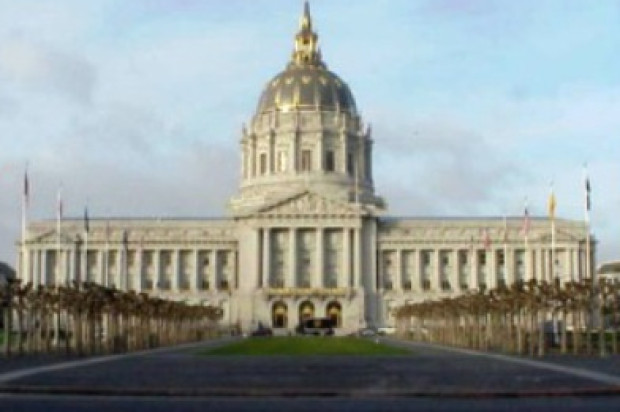
Family members and friends of suicide victims who died jumping from the Golden Gate Bridge gathered at the steps of San Francisco City Hall today to urge the building of a suicide barrier on the bridge.
“I don’t want any of our loved ones or future loved ones to go through this,” Manuel Gamboa, whose son Kyle jumped to his death from the bridge in September, said as he fought back tears.
“This barrier, whether a net or fence, needs to be there,” Gamboa said.
In 2010, the Golden Gate Bridge, Highway and Transportation District board of directors approved a safety net proposal. However, there is no timeline for building the barrier and advocates say the process has been delayed by bureaucratic red tape.
The bridge district, the Metropolitan Transportation Commission and Caltrans are paying for the $66 million project, though a funding plan has not been determined.
Golden Gate Bridge spokeswoman Mary Currie said a final design for the net will likely be completed in the next few months, despite the question of who will pay for the net.
“Lots of conversations are occurring,” Currie said. “It is something that we’re talking about at the regional and state level in terms of finding funding. The fact that we’re having these discussions makes it a priority.”
MTC spokesman John Goodwin echoed Currie, saying the net is a priority for the commission as well.
Goodwin added that the MTC has already contributed $5 million for the net’s design.
But San Francisco Supervisor David Campos says that’s not enough.
“A safety net should have been put in place years ago,” Campos said. “Let’s not haggle over who pays for what. The goal should be to get the net up as quickly as possible.”
Working out the costs is tricky because the MTC has never dealt with this type of project before, Goodwin said.
“How do you come up with $66 million for a unique project?”
Goodwin said. “It’s a big challenge.”
Nicolas Aparicio’s daughter Gabri became one of 10 confirmed suicide victims who jumped from the Golden Gate Bridge in August, the most suicides the bridge has seen in a month since its completion in 1937.
Aparicio said today he believes his daughter’s suicide was an impulse and if there had been a suicide barrier on the bridge, his daughter would still be alive.
When his daughter went missing, Aparicio tracked her cellphone to a parking lot next to the Golden Gate Bridge. There, he found her car with a parking ticket on the windshield. But he couldn’t locate his daughter.
Aparicio said his daughter sent a questionnaire to an exchange student just a half-hour before she jumped to her death.
“I’m convinced she acted on impulse,” Aparicio said. “If it wasn’t for the easy access at the bridge, my daughter would still be alive.”
Advocates for the barrier say eliminating the option to jump from the bridge could save the lives of those who contemplate jumping.
“By removing the means for suicide, you remove the temptation,” said Meghan Freebeck, development director for San Francisco Suicide Prevention.
Kevin Hines, who survived the fall after jumping from the bridge in 2000, changed his mind seconds before hitting the water and decided he wanted to live.
Hines said it’s too easy for those who are not mentally fit to take their own lives at the bridge.
“The 4-foot railing on the Golden Gate Bridge is the equivalent of a loaded gun in the middle of a mental ward,” he said.
Retired Marin County Coroner Ken Holmes said that in 2013, there were 46 confirmed suicides at the Golden Gate Bridge, the highest number in a year he can ever remember.
To date, there have been about 1,600 confirmed suicide deaths from the Golden Gate Bridge – more than at any other location in the world, according to the Bridge Rail Foundation, a group organized to prevent suicides on the bridge.
Laura Dudnick, Bay City News









